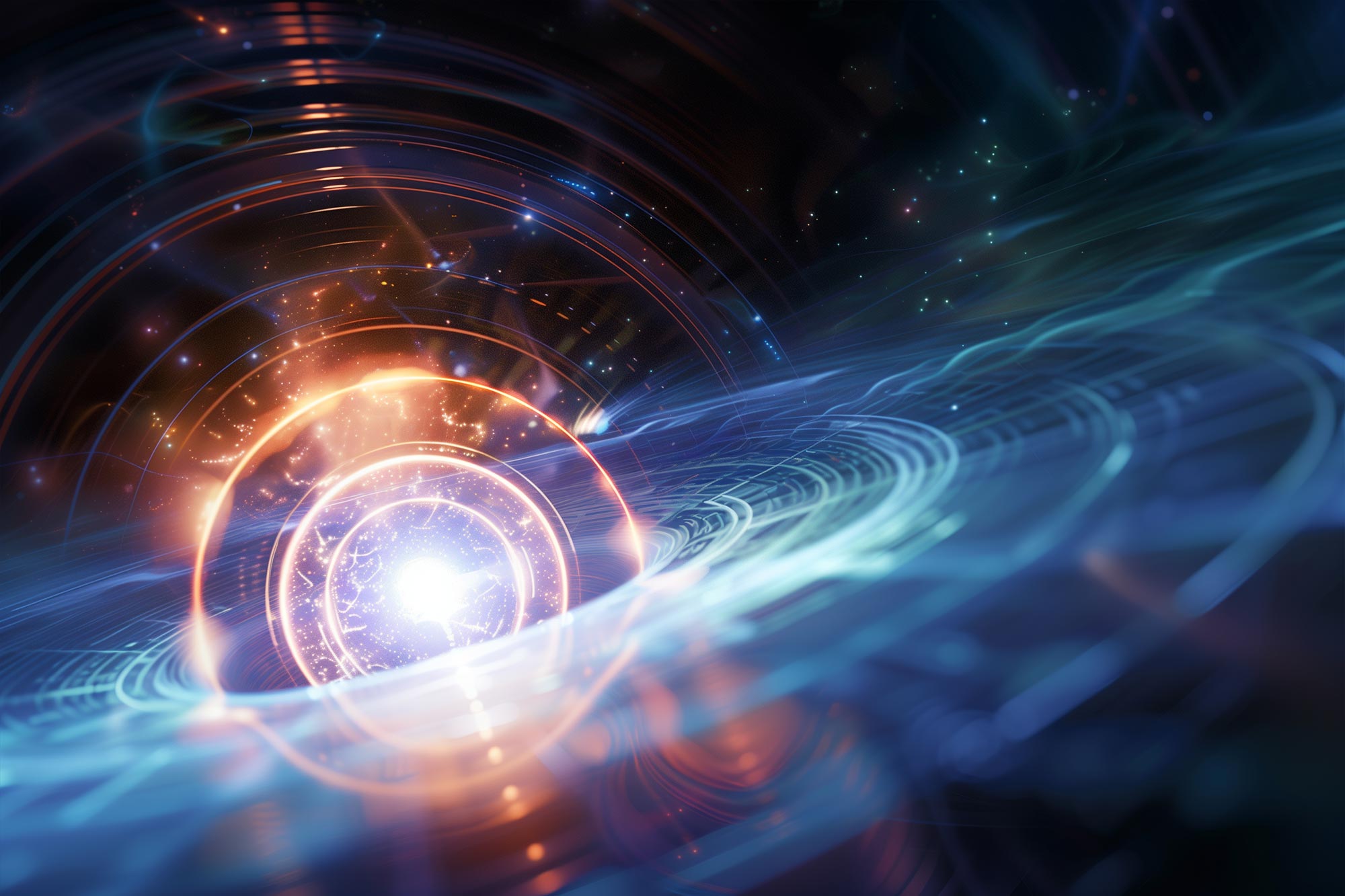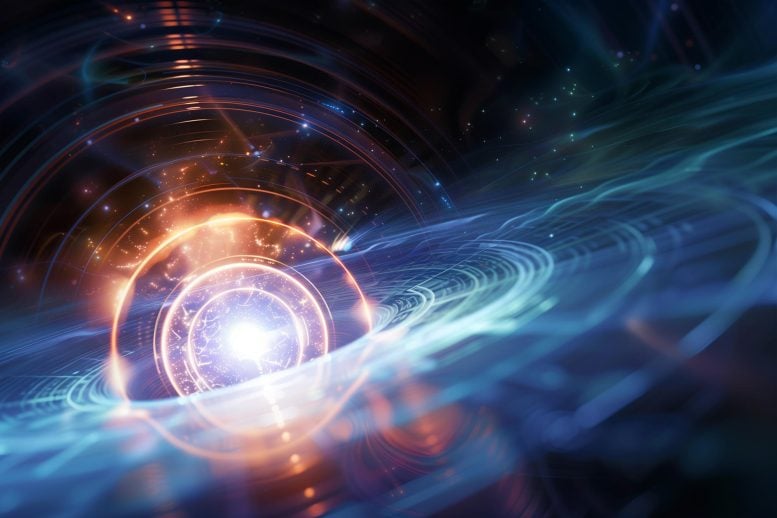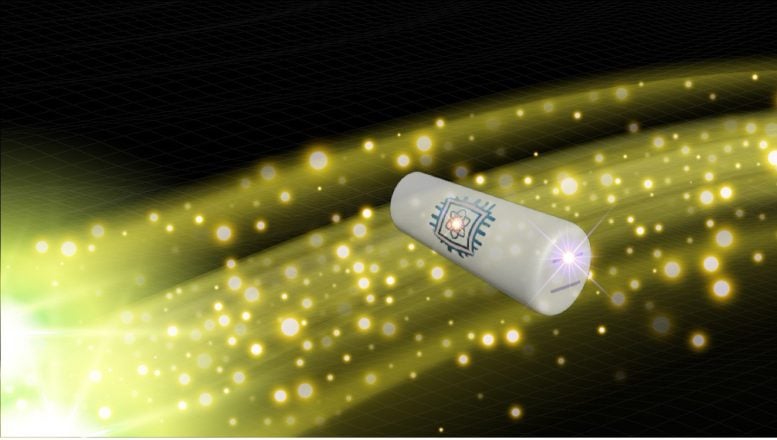

A quantum sensing experiment now has the potential to identify single gravitons — the particles that make up gravity — which was considered impossible until now.
A team led by Stevens professor Igor Pikovski has recently proposed a method to detect individual gravitons, believed to be the quantum building blocks of gravity. They suggest that with advancements in quantum technology, this experiment could become a reality in the near future.
“This is a foundational experiment that was long thought impossible, but we think we’ve found a way to do it,” says Stevens physics professor Igor Pikovski, also affiliated with Stockholm University.
Pikovski led a team of first-year graduate students Germain Tobar, Thomas Beitel, and postdoctoral researcher Sreenath Manikandan. Their results on “detecting single gravitons with quantum sensing” were published in Nature Communications this week.
Elusive particles that build up the cosmic fabric
Gravity just works. Things fall, planets orbit each other. Over a hundred years ago, Einstein revolutionized our understanding of gravity, by explaining it as changes in space and time. Many effects of gravity previously unimaginable have now been confirmed: time dilation, gravitational waves, or black holes.
But something else is special about gravity: we have only seen its “classical” version so far, whereas all other forces are explained by quantum theory. One of the holy grails of physics has long been to link gravity with quantum mechanics, but that problem remains unsolved. In any quantum theory of gravity, we’d expect certain single indivisible particles to occur.

Physicists have named these elusive particles gravitons — think of them as building blocks of gravity, just as atoms are the building blocks of matter. In theory, the gravitational waves that frequently pass through Earth from colossal cosmic events like black hole collisions are made up of huge numbers of those gravitons. Impressive big detectors like LIGO can now confirm the existence of such gravitational waves. Yet a graviton has never been detected in history; even the idea of spotting one was long thought impossible.
That may have just changed, however.
Pikovski’s team proposed a solution that involves coupling existing physical detection technology — something called an acoustic resonator, basically a heavy cylinder — and fitting it with improved energy state-detection methods (also known as quantum sensing).
“Our solution is similar to the photo-electric effect that led Einstein to the quantum theory of light,” explains Pikovski, “just with gravitational waves replacing electromagnetic waves. The key is that energy is exchanged between the material and the waves only in discrete steps – single gravitons are absorbed and emitted.”
But how to detect them?
“We need to cool the material and then monitor how the energy changes in a single step, and this can be achieved through quantum sensing,” says Manikandan, a postdoctoral fellow at The Nordic Institute for Theoretical Physics in Stockholm.
“By observing these quantum jumps in the material, we can deduce that a graviton was absorbed” adds Tobar, now a graduate student at Stockholm University. “We call it the ‘gravito-phononic effect.’”
One of the team’s proposed innovations is to use available data from LIGO – a two-facility U.S. observatory that recently confirmed the existence of gravitational waves.
“The LIGO observatories are very good at detecting gravitational waves, but they cannot catch single gravitons,” notes Beitel, a Stevens doctoral student. “But we can use their data to cross-correlate with our proposed detector to isolate single gravitons.”
Cosmic collisions, heavy cylinders, quantum sensors
How did Pikovski’s team design this ingenious experiment? Lots of math and creativity, plus some big help from recent advancements in technology.
“Many physicists thought about this over the years, but the answer was always the same: it cannot be done,” says Pikovski. “It was impossible to imagine quantum experiments that go beyond a few atoms, and they hardly interact with gravitons at all.”
But the game has now changed: scientists have recently begun to create and observe quantum effects in macroscopic objects. Pikovski realized these macroscopic quantum objects are ideal for seeing single graviton signatures: they interact much more strongly with gravity, and we can detect how these objects absorb and emit energy in discrete steps.
The team began thinking through a possible experiment. Using data from gravitational waves that have previously been measured on Earth, such as those that arrived in 2017 from a collision of two Manhattan-sized (but super-dense) faraway neutron stars, they calculated the parameters that would optimize the absorption probability for a single graviton.
“It turns out, this measurement can be done,” says Manikandan, “for example by using a device similar to the Weber bar.”
Weber bars are thick, heavy (up to a ton) cylindrical bars named for their inventor, New Jersey native Joseph Weber. The bars have fallen into disuse recently as optical-based detection technologies have proliferated, but they would actually work well for a physicist’s graviton-hunting expedition.
That’s because they can absorb and emit gravitons—in direct analogy to what Einstein coined the “stimulated emission and absorption” of photons, the smallest building blocks of light.
A newly designed quantum detector would be cooled to its lowest energy, then would be set vibrating very slightly by the passage of a gravitational wave. Super-sensitive energy sensors could then theoretically capture how those vibrations changed in discrete steps. Each discrete change (also known as a quantum jump) would indicate a single graviton event.
Of course, there’s a catch with catching gravitons. The necessary sensing technology doesn’t quite yet exist.
“Quantum jumps have been observed in materials recently, but not yet at the masses we need,” points out Tobar. “But technology advances very rapidly, and we have more ideas on how to make it easier.”
“We’re certain this experiment would work,” enthuses Thomas. “Now that we know that gravitons can be detected, it’s added motivation to further develop the appropriate quantum-sensing technology. With some luck, one will be able to capture single gravitons soon.”
But while new quantum technologies are critical, the inspiration for this result came from elsewhere. “We know that quantum gravity is still unsolved, and it’s too hard to test it in its full glory,” says Pikovski, “but we can now take the first steps, just as scientists did over a hundred years ago with quanta of light.”
Reference: “Detecting single gravitons with quantum sensing” by Germain Tobar, Sreenath K. Manikandan, Thomas Beitel and Igor Pikovski, 22 August 2024, Nature Communications.
DOI: 10.1038/s41467-024-51420-8